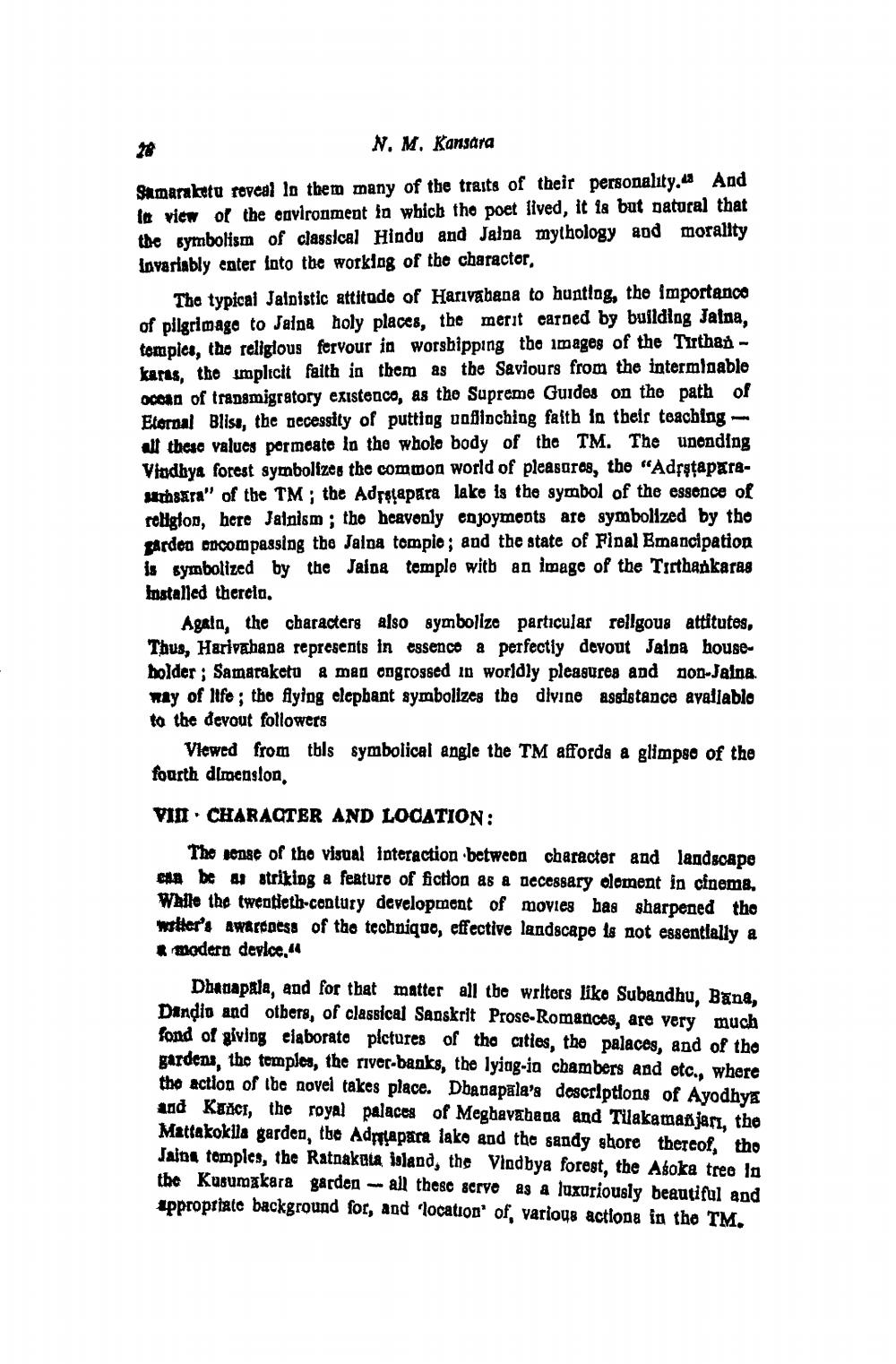________________
N. M, Kansara
Sumaraketu reveal lo them many of the traits of their personality. And in view of the environment in which the poet lived, it la but natural that the symbolism of classical Hindu and Jalpa mythology and morality lavariably enter into the working of the charactor,
The typical Jainistic attitude of Harivabana to huntlog, the importanco of pilgrimage to Jalna holy places, the merit carned by building Jalna, tompics, the religious fervour in worshipping the images of the Tirthan - karts, the implicit faith in them as the Saviours from the interminable ocean of transmigratory existence, as the Supreme Guides on the path of Eternal Blise, the necessity of putting undidching falth in their teaching - all these values permeate in the whole body of the TM. The uponding Vindhya forest symbolizes the common world of pleasaros, the "Adrstaparasuthsara" of the TM; the Adretapara lake is the symbol of the essence of religion, here Jainism; the heavonly enjoyments are symbolized by the garden oncompassing the Jalna tompie; and the state of Final Emancipation is symbolized by the Jaisa temple with an image of the Torthankaras lastalled thercia.
Again, the characters also symbolize particular rellgous attitutes, Thus, Harivahana represents in essence a perfectly devout Jalpa householder; Samaraketu & man ongrossed in worldly pleasures and non-Jalna. way of Itfe; the flying clephant symbolizes the divine assistance availablo to the devout followers
Vlewed from tbls symbolical angle the TM afforda a glimpse of the fourth dirocasion,
VIN CHARACTER AND LOCATION:
The sense of the visual interaction betweon character and landscape can be a striking a featuro of fiction as a necessary element in cinema, Walle the twentieth-century development of movies has sharpened the weiter's Awareness of the techniquo, effective landscape is not essentially a # modern device.
Dhanapala, and for that matter all the wrlters liko Subandhu, Bang, Dindio and others, of classical Sanskrit Prose-Romances, are very much fond of giving elaborato pictures of the cities, the palaces, and of the gardens, the temples, the river-banks, the lying-in chambers and etc., where the action of the novel takes place. Dbanapala's descriptions of Ayodhya and Kuace, the royal palaces of Meghavahana and Tuakamanjari, the Mattakoklla garden, tbe Adprlapara lake and the sandy shore thereof, the Jaint temples, the Ratnakata island, the Vladbya forest, the Asoka tree in the Kusumakara garden - all these scrve as a luxuriously beautiful and uppropriate background for, and location of various actions in the TM.




